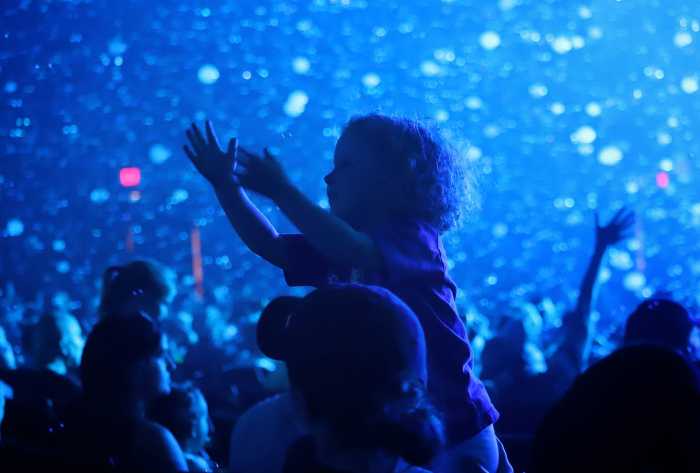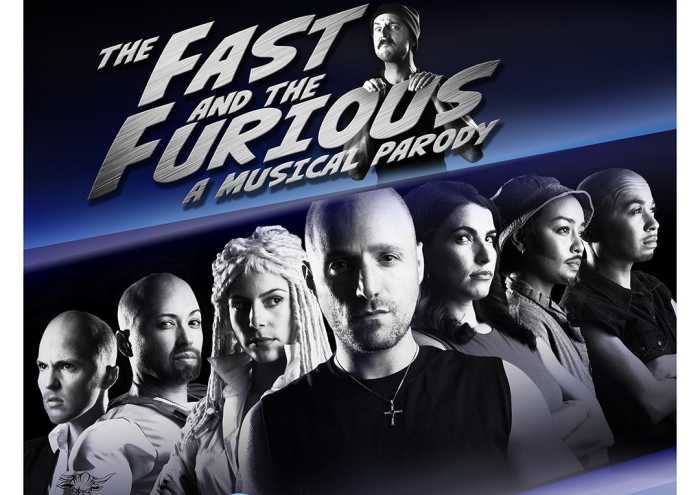Before our chat, Laurie Anderson plays with her dog. He runs around her spacious Tribeca office, which is somewhere between a working space and a comfy home: lots of books, a painting of the Dalai Lama, a modest picture of Lou Reed, her husband until his death in 2013, tucked away near one of several bookshelves. Anderson is that most feared-by-the-masses entity: a performance artist, whose albums and concerts mix in the avant-garde and spoken word. But she’s also someone who plays with a dog, shows off a pet trick, hands out sesame cookies as I’m heading out. She grins when she talks, and when I confess I’ve never seen one of her favorite films — Vittorio De Sica’s “Miracle in Milan” — she gets childishly excited. “How fantastic!” she exclaims. “You have the pleasure of seeing it! You’re so lucky.”
It’s a film we’re here to discuss. She’s made one: “Heart of a Dog,” less a documentary than a cine-essay reminiscent of Chris Marker and Agnes Varda. Ostensibly it’s about Lolabelle, her departed rat terrier, so dear to her she would even join her in public, including on a 2003 episode of “Charlie Rose” she did with Reed. But it keeps getting away from canine matters and to philosophical reflections on grief, existence and the idea of “feeling sad without being sad.” It uses stories of her life but also from others. She’s only made one feature before — the 1986 concert film “Home of the Brave” — and a couple shorts. Our conversation, like her film, has a habit of roaming.
It’s strange to think this is only your second feature, given how much your work is about blending mediums. Was cinema just not something that interested you?
It never occurred to me to make a movie! It just seemed, like, too daunting. I had forgotten you could make a movie for the cost of nothing — just using iPhones and making an incredibly homemade movie. What was putting me off was looking for the money. I just hate fundraising. I’ve always given this advice to young artists: Don’t dream of this big thing and this big system that will solve all your problems. Just do something with what you have. Pencil drawings can be dangerous. They can be monumental. With some projects it’s good to have a big system, but not if it’s going to stop you from doing some smaller thing. Usually I never follow my own advice. In this case I did, because that’s good advice.
It is very homemade. I pictured you piecing it together on a desk staring at a screen.
That’s what it is. It’s me on a laptop, piecing things together. That’s really exciting because anyone can do that.
RELATED: “Heart of a Dog” finds Laurie Anderson being accessible (and has dogs)
It’s tempting to read this as a memoir film, but you leave so much of yourself out when you really look at it. It’s not really a memoir film.
It’s not. It’s not self-expression. It’s not a story about getting to know me or my childhood. That’s not the point. I’m definitely using myself, but it’s not autobiographical stories. It’s an essay that uses stories from my life. It’s disguised as a memoir, but it’s not really a memoir. Because the point of a memoir is to say who I was, who I would be and how it is to be human. Those things play into it, but they’re not primary.
Making a film is different from, say, an album. But was it that different?
The structure was how I would do any performance, really, although maybe a little bit more geared to the engine, to the propulsion of where this is going. In a concert it can be 15 songs that are unrelated, and they’re each in their own style. It can be a collection. Film, I think, has to be driven. I tried to set it up with a series of questions that thread through it, things that are addressed. And I wanted to always keep in mind that it’s about the fallibility of language, to leave a lot of room for these other things to take over in music and image. Even though it’s a film about stories, it’s a film about failure of words. What happens when you repeat or forget them? What happens when someone uses them in a way that’s not familiar to you? Or they describe you in a way that you’re like, “I’m not that person you’re seeing at all”? Or in surveillance culture, when a portrait is created of you?
Speaking of language, the film has a spoken word quality to it. But the visual component is subtly important.
Some of the things are words that are not voiced. These rapid text things you read are really meant to address that part of you that never speaks — a silent witness that’s trying not to talk, that’s saying, “Oh, not again. This is pathetic.” [Laughs] I wanted to make words that would come in through your eyes, that would not be heard. Looking is so different from hearing. The big book in the middle of the movie, “The Tibetan Book of the Dead,” is subtitled “The Great Liberation Through Hearing.” Hearing is really key to how these stories are told.
Sound and image are how we first relate to the world, before we learn language and try to define everything through words.
Sound is very, very physical. It’s the physicality of things like music that make you feel it. To me hearing is more emotional than seeing. It’s a silly generalization, but it’s not far-fetched when someone cries when they hear their favorite song. You don’t see that many people crying in front of their favorite painting in a museum. It’s a different kind of way it comes into you. It doesn’t mean it has less impact on you. Visuals are less emotional, and they’re less physical. A lot of people don’t dance while they’re looking at a painting, or cry.
RELATED: “Experimenter” is a biopic more dense and playful than “Steve Jobs”
If we cry at a movie it’s often, not always, because the narrative is manipulating us, not because it’s reaching a place beyond words, like music and sound does.
And movies manipulate you with music. That’s what I wanted to avoid. When I did the first cut of this there was no music. I showed it to some people and they said, “Don’t put music, no matter what you do. It’s so hardcore with just a voice.” And I thought, “I’m a musician. [Laughs] I’m going to put some music on. I could always take it off if I don’t like it.” The soundtrack, though, really is the story. It’s kind of more of a radio play than a movie, in a funny way. You’re asked to picture things you’re not going to be seeing. Moses [one of the people talked about in the film] who lived up in the trees, pretending her worked for the phone company — you’re just seeing a bunch of telephone poles going by and wires. You have to look through the point of view of a dog, then the high angle lens of a surveillance camera. It asks you to do a lot of moving around.
In terms of ideas, it reflects on existence and how to live with grief and the basics of how we pick ourselves up to soldier on through life. Some people who have lived to be very old talk about focusing on the positive. The filmmaker and archivist Jonas Mekas, who is a sprightly 92, talks about only focusing on beautiful things, especially after having such a grim youth.
That probably helps you live longer than dwelling on the dark side. One of the things that a Buddhist teacher told me — he’s the one who said “try to feel sad without being sad.” His mode is 1000 percent happiness — that we are here to experience bliss and happiness, and you’re an idiot if you think it’s for something else. [Laughs] He’s pretty hardcore about that. Everything then is about this kind of love. He’s very definitive about that. Even suicide is about love. They’re tempted to be free. Everything moves towards that, is his idea. That is a powerful idea because it is not compromised at all. It’s a really hardcore idea.


























